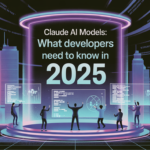SmolVLA robotics model by Hugging Face is making headlines, and here’s why you should care: this compact, high-performance AI system is now powerful enough to run on a MacBook. Whether you’re a hobbyist building robots at home, an AI researcher looking for open models, or a developer trying to understand the robotics shift we’ve broken it all down for you. No fluff, no filler. Just deep, clear information that helps you make smarter moves.
Let’s get into the details.
Why the SmolVLA Robotics Model Matters Right Now
SmolVLA is Hugging Face’s latest answer to the robotics world’s need for efficiency, accessibility, and performance. It’s a vision-language-action (VLA) model that can interpret what a robot sees and hears and respond with actions in real time. What makes it special is this:
- It runs on a MacBook.
- It’s open-source.
- It outperforms larger models in many tests.
We’re seeing a moment where robotics often thought of as expensive and exclusive is being democratized. Hugging Face’s SmolVLA robotics model changes who can build and test robotic systems. Now, even small developers with low-cost setups can do what used to take server-grade GPUs.
What Is the SmolVLA Robotics Model?
SmolVLA (Small Vision Language Action) is a 450-million-parameter model. That size is tiny compared to the billions often seen in large-scale AI. Yet, despite its size, it packs a punch:
- Lightweight yet powerful: Trained using Hugging Face’s own robotics dataset platform, LeRobot
- Asynchronous inference stack: Separates sensing (vision/audio) and acting, which boosts real-time responsiveness
- Modular and testable: You can try it on affordable hardware not just expensive robotic arms
This model is part of Hugging Face’s broader robotics mission, which includes tools, datasets, and even full robots via their Pollen Robotics acquisition.
What Makes It Unique?
Most robotics AI models require heavy-duty GPUs or cloud servers. SmolVLA breaks that pattern. Here’s what sets it apart:
| Feature | SmolVLA | Traditional Robotics AI |
|---|---|---|
| Model Size | 450M parameters | 1B+ parameters |
| Hardware Required | Consumer GPU / MacBook | Server-grade GPU |
| Vision-Language-Action Stack | ✅ Yes | ❌ Partial or separate |
| Real-Time Responsiveness | ✅ High (async inference) | ❌ Often delayed |
| Community Training Datasets | ✅ LeRobot Datasets | ❌ Rare / closed data |
| Open Source | ✅ Fully available | ❌ Proprietary / limited |
That last point is critical. This robotics model is open. You can download it, test it, train it, or modify it.
Who Is This For?
SmolVLA is not just for research labs. It’s for:
- Indie developers who want to explore robotics without spending thousands
- Universities teaching robotics and AI
- Startups building low-cost robotic tools
- Robotics hobbyists running experiments at home
The ability to run on a MacBook isn’t just a fun fact it’s a real shift in development barriers. Lower cost. More access. Faster iteration.
What Are People Using It For?
Already, developers have started:
- Controlling robotic arms with only vision input
- Running simulations in real-world and virtual testbeds
- Building multi-agent systems with localized decision loops
- Connecting it to audio sensors for sound-based control
One user posted a demo of a third-party robot arm powered entirely by SmolVLA running on a laptop.
How Does the Model Work?
SmolVLA processes three inputs: vision (camera), language (commands or environment tags), and optional audio. It then outputs structured actions. Thanks to its asynchronous architecture, the sensing and acting modules work independently. This gives a major speed advantage:
- Vision or audio doesn’t block action
- Action continues even during frame drops
- System doesn’t stall under load
That separation means real-world robots like humanoids, pickers, or assistants respond faster. A robot that takes in its surroundings and acts without waiting is more useful in fast-changing situations.
The Bigger Picture: Hugging Face’s Robotics Ambitions
SmolVLA isn’t a one-off. Hugging Face has been building toward a robotics ecosystem for over a year. Let’s break that down:
1. LeRobot
A platform that hosts robotics-specific models, tools, and datasets. It’s open, organized, and community-driven.
2. Pollen Robotics Acquisition
In 2024, Hugging Face acquired Pollen Robotics, a French robotics company. This gave them a foothold in hardware and physical robotics systems.
3. Affordable Humanoid Bots
As of 2025, Hugging Face offers its own entry-level humanoids. These are:
- Lightweight
- Testable with SmolVLA
- Open for developer expansion
This vertical integration from model to dataset to robot is rare and powerful.
Common Questions Around the SmolVLA Robotics Model
Can I download and run SmolVLA for free?
Yes. It’s open-source and available on Hugging Face. You’ll need basic knowledge of Python, robotics APIs, and a GPU-capable machine or a newer MacBook with an M-series chip.
What kind of datasets does it use?
LeRobot Community Datasets: crowdsourced, tagged, and verified by robotics devs globally.
Can I train it on my own data?
Yes. You can fine-tune SmolVLA using PyTorch or other supported frameworks. Just make sure your dataset matches the input structure.
What makes asynchronous inference a big deal?
In traditional robotics, processing what a robot sees often delays action. With async inference, those two pipelines run in parallel, speeding up response.
What Are the Downsides?
It’s not all perfect. Here’s what to consider:
- Lower parameter count means less generalization for unknown tasks
- No built-in safety layers you’ll have to build those
- Relies on developer fine-tuning for real-world precision
- Still early in ecosystem maturity
That said, for many developers, these trade-offs are acceptable compared to the cost and complexity of other solutions.
Tips for Getting Started with SmolVLA
Here’s how to test-drive SmolVLA quickly:
- Visit Hugging Face’s model page and download the base model.
- Set up a Python environment with PyTorch and Hugging Face Transformers.
- Use their robotics starter code, which supports quick deployment to test devices.
- Test in simulation before real hardware.
- Join the LeRobot community to find test datasets and benchmarks.
Mistakes to Avoid
- Assuming it’s plug-and-play: It still requires setup
- Testing only in simulation: Real-world variance is huge
- Skipping async pipeline understanding: That’s what makes this model shine
- Underestimating dataset quality: Bad input = bad robot behavior
SmolVLA vs Other Players
Several companies are working on open robotics, including:
| Company | Focus | Open Access | Hardware Support |
| Hugging Face | VLA model + ecosystem | ✅ Yes | ✅ Own and 3rd party |
| Nvidia | Simulation + perception tools | ⚠️ Partially | ✅ Requires GPU rigs |
| K-Scale Labs | Open-source humanoids | ✅ Yes | ✅ Modular |
| Dyna Robotics | Autonomous robotics platforms | ❌ No | ✅ Enterprise-focused |
| RLWRLD | VLA agents for virtual bots | ⚠️ Closed beta | ❌ Software-only |
Why It’s a Big Deal for Developers
Robotics used to mean huge investments, massive compute, and long test cycles. SmolVLA changes that. It brings:
- Low cost of entry
- Speedy testing cycles
- Community-driven improvement
- A bridge between research and real-world devs
You don’t need a robotics lab anymore. Just curiosity, a laptop, and a few hours.
Final Thoughts: Should You Care About SmolVLA?
Yes. Hugging Face’s SmolVLA robotics model is one of the most developer-friendly entries into AI-driven robotics we’ve seen. If you’re building anything that sees, interprets, and acts it matters.
With a focus on accessibility, community, and performance, SmolVLA represents the future of open robotics. Not some vague, academic concept but a real, downloadable tool that works today.
Just make sure your toolchain and your mindset can keep up.






